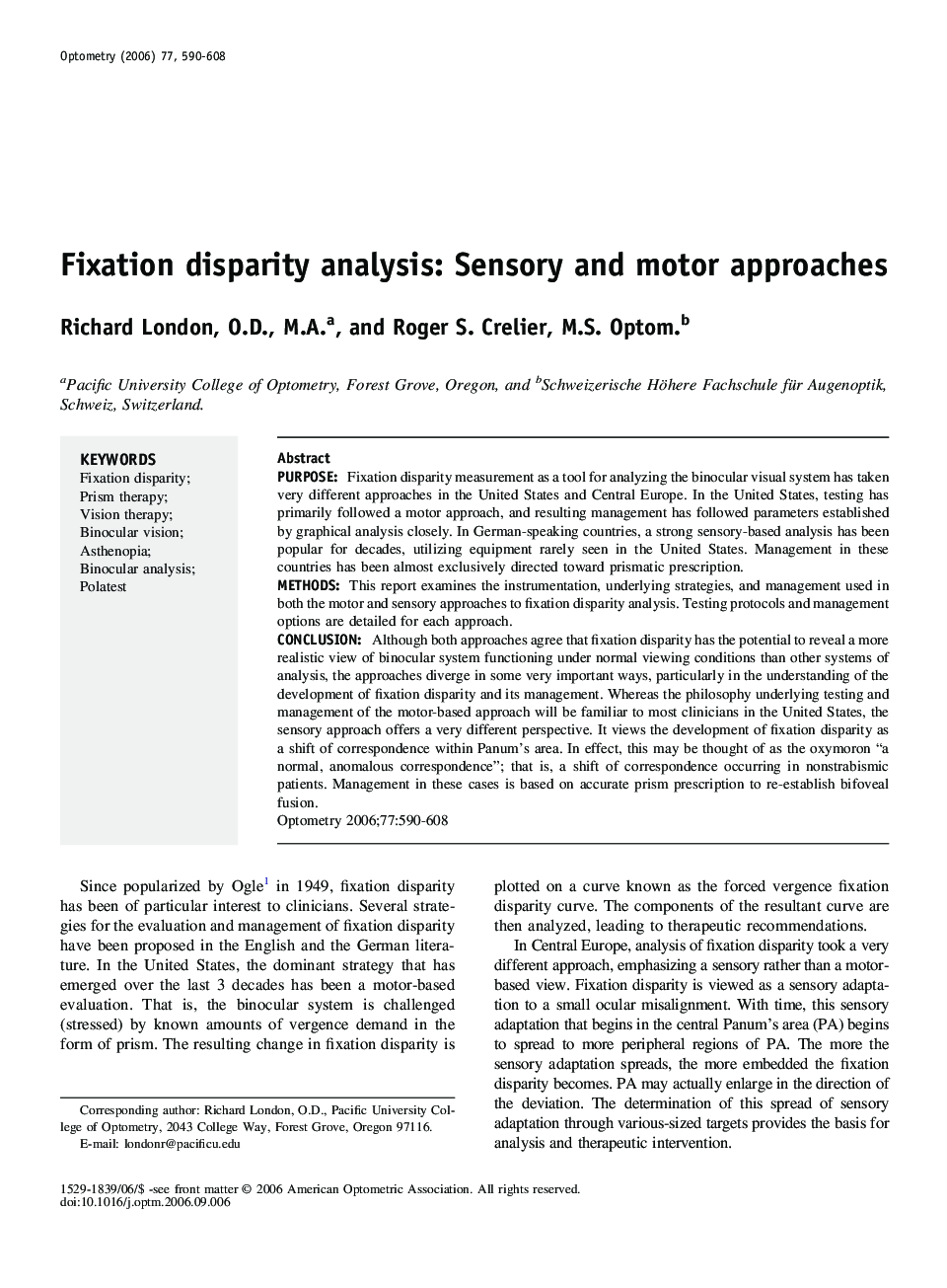| Article ID | Journal | Published Year | Pages | File Type |
|---|---|---|---|---|
| 2703311 | Optometry - Journal of the American Optometric Association | 2006 | 19 Pages |
PurposeFixation disparity measurement as a tool for analyzing the binocular visual system has taken very different approaches in the United States and Central Europe. In the United States, testing has primarily followed a motor approach, and resulting management has followed parameters established by graphical analysis closely. In German-speaking countries, a strong sensory-based analysis has been popular for decades, utilizing equipment rarely seen in the United States. Management in these countries has been almost exclusively directed toward prismatic prescription.MethodsThis report examines the instrumentation, underlying strategies, and management used in both the motor and sensory approaches to fixation disparity analysis. Testing protocols and management options are detailed for each approach.ConclusionAlthough both approaches agree that fixation disparity has the potential to reveal a more realistic view of binocular system functioning under normal viewing conditions than other systems of analysis, the approaches diverge in some very important ways, particularly in the understanding of the development of fixation disparity and its management. Whereas the philosophy underlying testing and management of the motor-based approach will be familiar to most clinicians in the United States, the sensory approach offers a very different perspective. It views the development of fixation disparity as a shift of correspondence within Panum’s area. In effect, this may be thought of as the oxymoron “a normal, anomalous correspondence”; that is, a shift of correspondence occurring in nonstrabismic patients. Management in these cases is based on accurate prism prescription to re-establish bifoveal fusion.
